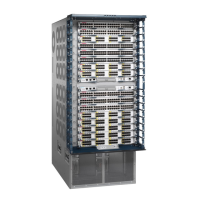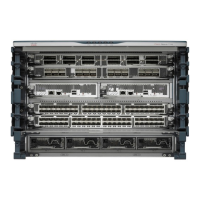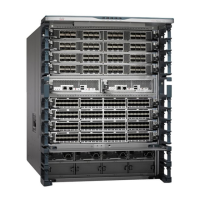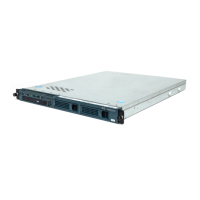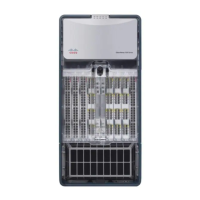A-250 Cisco 7000 Hardware Installation and Maintenance
Console Port Signals
Console Port Signals
Thee console port on the RP (or RSP7000) is an EIA/TIA-232, DCE, DB-25 receptacle. Both DSR
and DCD are active when the system is running. The RTS signal tracks the state of the CTS input.
The console port does not support modem control or hardware flow control. Table A-1 lists the
signals used on this port. The console port requires a straight-through EIA/TIA-232 cable.
Table A-1 Console Port Signals
Auxiliary Port Signals
The auxiliary port on the RP (or RSP7000) is an EIA/TIA-232, DTE, DB-25 plug to which you
attach a CSU/DSU or other equipment in order to access the router from the network. Table A-2 lists
the signals used on this port.
The auxiliary port supports hardware flow control and modem control.
Table A-2 Auxiliary Port Signals
Ethernet Connector Signals
Most Ethernet transceivers require an attachment unit interface (AUI) or transceiver cable to connect
an Ethernet transceiver to the EIP Ethernet ports. Some unshielded twisted-pair (10BaseT)
transceivers are compact enough to connect directly to the EIP ports without impeding other
connections. For descriptions of Ethernet transceivers, connectors, and cables refer to the section
“Ethernet Connection Equipment” in the chapter “Preparing for Installation.”
Pin Signal Direction Description
1 GND – Ground
2 TxD <— Transmit Data
3RxD —>Receive Data
6 DSR —> Data Set Ready (always on)
7 GND – Ground
8 DCD —> Data Carrier Detect (always on)
Pin Signal Direction Description
2 TxD —> Transmit Data
3 RxD <— Receive Data
4 RTS —> Request To Send (used for hardware flow control)
5 CTS <— Clear To Send (used for hardware flow control)
6DSR <—Data Set Ready
7 Signal Ground – Signal Ground
8 CD <— Carrier Detect (used for modem control)
20 DTR —> Data Terminal Ready (used for modem control only)

